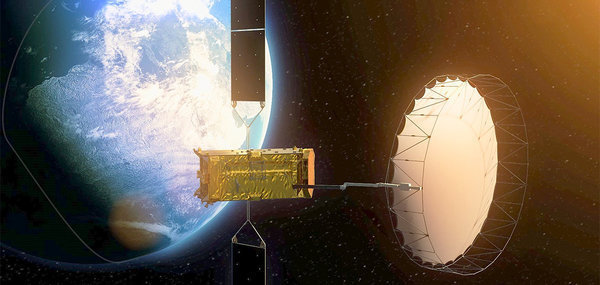
Research highlights 2017
In 2017, Max Planck scientists published a number of groundbreaking research papers. Here are twelve highlights that showcase some of their most recent work.
Holograms for biomedicine
Electron holography is now making it possible to image the biologically relevant, three-dimensional structure of individual proteins. It thus offers a new means of examining biological processes and discovering medical agents.
MPI for Solid State Research, 14 February 2017
Breath test to diagnose cancer
A new test procedure measures the tiniest chemical changes in breath and one day could thus detect lung tumours at an early stage. The test is now to be further developed with licensing partners in such a way that it can be used to diagnose lung cancer.
MPI for Heart and Lung Research, 18 April 2017
Learning to read changes the brain in adults
Brain researchers and speech scientists have found out how the brains of illiterate persons change when they learn to read. The surprise is that the changes are seen in brain regions that are very old in evolutionary terms. As an interesting aside, adult participants in the study learned to read just as quickly as children.
MPI for Psycholinguistics and MPI for Human Cognitive and Brain Sciences, 24 May 2017
Homo sapiens is older than once thought
With the aid of newly discovered fossils and stone tools from Morocco, scientists have recalibrated the origin of modern man: results show that Homo sapiens was already living in Africa roughly 300,000 years ago — 100,000 years earlier than previously assumed.
MPI for Evolutionary Anthropology, 7 June 2017
Magnetic resonance scanner for single proteins
Thanks to improved resolution, a quantum sensor can now identify individual atoms in biomolecules.
Nuclear magnetic resonance scanners, as are familiar from hospitals, are now extremely sensitive. A new quantum sensor now makes it possible to use nuclear magnetic resonance scanning to even investigate the structure of individual proteins atom by atom.
In the future, the method could help to diagnose diseases at an early stage by detecting the first defective proteins.
MPI for Solid State Research, 01 June 2017
Quantum communication with a satellite
Data could soon be transmitted totally securely in global communications, as the transmission of quantum states with the aid of a geostationary satellite enables quantum cryptography over long distances.
MPI for the Science of Light, 15 June 2017
Healthy lifestyle adds seven years of life
Anyone can increase their chances of living seven years longer than the average and in good health. The prerequisite: avoid being heavily overweight, smoke fewer than 100 cigarettes during your life and only drink alcohol in moderation, i.e. fewer than 14 alcoholic beverages a week for men and fewer than 7 glasses for women.
MPI for Demographic Research, 20 July 2017
Natural gut bacteria can trigger multiple sclerosis
Multiple sclerosis (MS) is the most common inflammatory disease of the central nervous system. It has been suspected for some time that bacteria in the natural intestinal flora may be responsible for triggering the disease in individuals genetically predisposed to it.
Identical twins, only one of whom is suffering from MS, have different microorganisms in their guts despite having the same genes.
If genetically modified mice which have been kept in sterile conditions are injected with the gut flora of their sick twin, almost one hundred percent of the animals suffer an inflammation of the brain similar to MS.
MPI for Neurobiology and MPI of Biochemistry, 11 September 2017
Gravitational waves from merging neutron stars
Dance of the heavyweights: Two neutron stars orbit each other in ever decreasing paths.
In the process, they emit gravitational waves. Astrophysicists have long studied this scenario in theory and also suspected that it would produce a burst of gamma rays. All of this was observed on 17 August.
MPI for Gravitational Physics, 17 October 2017
Shrews shrink in winter and grow in summer
The bones, brains and other organs of common shrews shrink in winter. Their skulls, for example, shrink by up to 15 percent in winter and grow again in spring by up to 9 percent. It is probable that this shrinkage helps the animals survive in the bare winter months with their high metabolism.
MPI for Ornithology, 23 October
Less fertilizer reduces particle pollution
Reducing ammonia emissions caused by fertilizers and animal husbandry could considerably lower the number of harmful particles in the atmosphere. A reduction of 50 percent could prevent 250,000 deaths a year around the world which are due to air pollution.
MPI for Chemistry, 27 October 2017
Proteins for the rubbish bin
Using a new method, scientists can remove any protein from a cell within minutes. In the process, the researchers direct a cellular protein by the name of Trim at a molecule of their choice, thereby handing it over for destruction.
MPI for Biophysical Chemistry, 16 November











